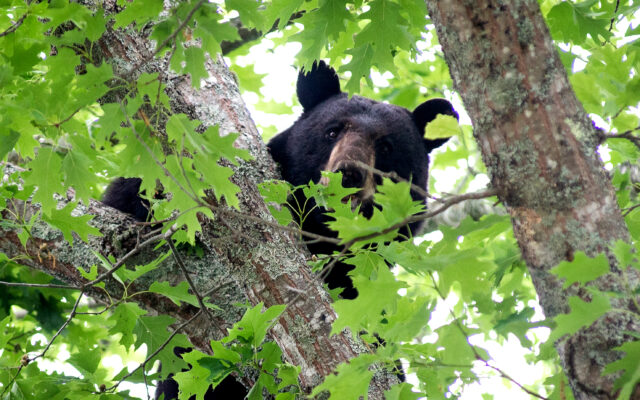
Bear harvest is down compared with last 2 years
By Julie Harris, Bangor Daily News Staff
Hunters killed fewer bears this season than in the last two years, although harvest numbers are higher than before the pandemic, according to the state’s longtime bear biologist.
The preliminary number of bears killed during hunting season was 3,269 according to the Maine Department of Inland Fisheries and Wildlife’s electronic reporting system. But the actual number will be closer to 3,300 when the bears shot by deer hunters are tallied, bear biologist Jennifer Vashon said.
Maine and Alaska are the only two states in the union that allow all three methods of hunting bears: baiting, using trained dogs and trapping. Maine, which has one of the highest populations of bears in North America, also allows resident hunters to shoot a bear while deer hunting.
The gap widened this year between the number of non-resident vs. resident bear hunters.
Last year, non-residents made up 52 percent of the bear hunters. In 2023, that number increased to 55 percent, said Vashon, who was the state’s bear biologist for nearly 20 years before recently being promoted to oversee the game section of the MDIF&W’s research and management group.
Residents dominate in moose and deer hunts in Maine, she said. Of the 200,000 total hunting licenses in Maine in 2023, including for bears, residents held 180,000 of them.
Seventy percent of the bears are shot over bait, while between 20 and 25 percent are hunted with dogs, Vashon said. She didn’t know why interest in using dogs is growing, just that it is.
The number of bears harvested by trapping has increased as well, she said. Pre-pandemic about 100 bears were trapped each season. In 2023, there were approximately 300 trapped.
Resident trapping permits have increased from about 500 to more than 1,000 in the same time period, and residents have more interest in trapping than non-residents, Vashon said.
The requirement that trappers take a black bear trapping course through the state before they will be issued a permit could be deterring non-residents. Non-residents tend to hire experienced registered Maine guides for their bear hunts, she said.
The guides do the preparation work of establishing a bait site and keeping it going or they own dogs trained for bear hunting. None of that can be done if the hunter doesn’t live in Maine and is only here a few days, she said.
“They get a unique bear hunting experience in Maine. That’s why they come here,” Vashon said.
Maine had approximately 15,000 bear hunters in 2002, but increases in the cost of bear permits drove those numbers down in 2003. They slowly began to rebuild and by 2019, there were about 11,000 hunters. Last year recorded 13,627.
The bump in the number of hunters could be related to the state reducing the permits for residents from $27 to $10 in 2022, Vashon said.
The preliminary number of bear permits for 2023 is 13,143.
Maine’s black bear population is unique in that it has a low number of disease parasites, making it a very healthy population. Bears get sarcoptic mange, which can be especially bad for young cubs, but even that is not severe. Maine has not seen bears dying from mange, she said.
The bear population in general is stable, and although there is no regional estimate of bear numbers, the animals are more uncommon in southern and coastal areas of the state.
Bears are being studied in a couple areas in particular. One has been in Bradford, Lagrange and Howland area since 1982, and a second shorter duration study is in Unity, where bear deaths are high due to vehicle collisions with the animals.
The hotspots for bear and people conflicts are Central Maine, Old Town and Hermon because of development pressures in those places, she said.
As for this year’s smaller kill, Vashon said bears don’t come to bait sites when natural food is plentiful. This was a good year especially for mast crops such as acorns, which meant there could be more bears shot by deer hunters than in past years because the bears stayed out of their dens longer.